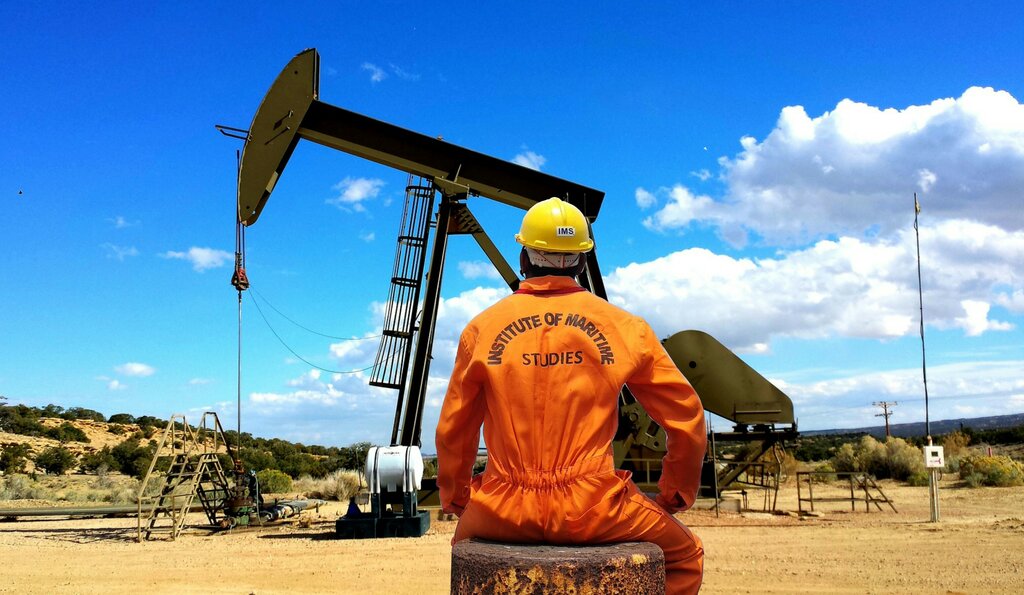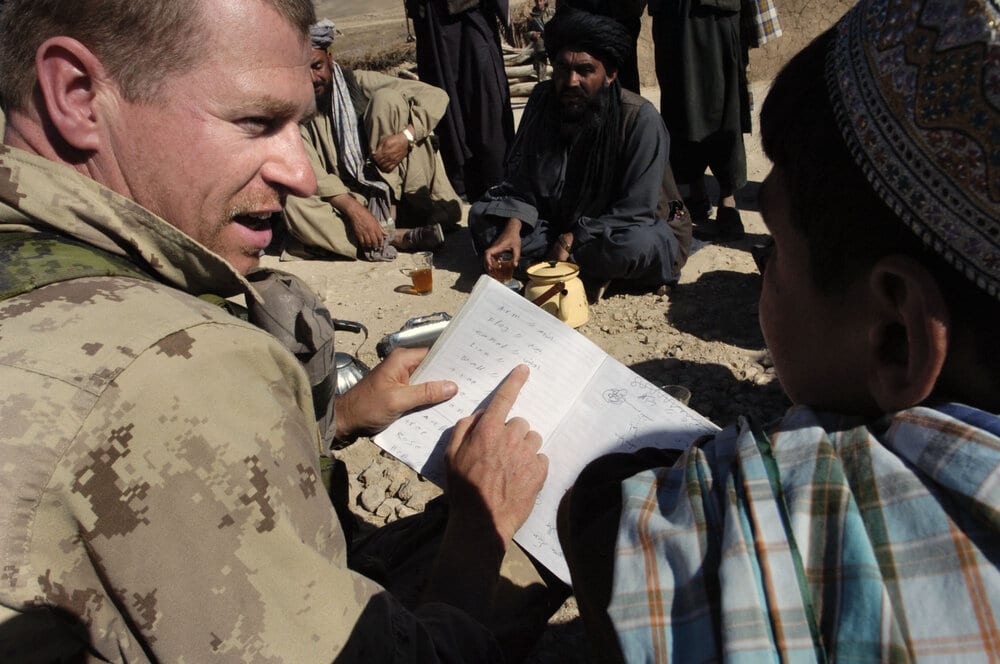—
Millions of years ago, northern Alberta in Canada was the bed of a massive warm inland sea. As algae and plankton sank to the sandy bottom, the heat and pressure of millions of generations transformed it into bitumen, which saturated the sandstone, creating oil sands. Fast forward several eons to 1943 and an American oil company executive named J. Howard Pew perched at the edge of the first rudimentary oil sands project near Fort McMurray in northern Alberta. Pew was investigating crude oil sources for the US government. His firm, Sun Oil Company, would go on to invest hundreds of millions of dollars in the fledgling industry, gradually morphing into one of the most powerful oil sands players, Suncor Energy. That crude operation would eventually become the world’s largest industrial project that is visible from space. But that’s not the only global superlative that would emerge from J. Howard’s little project. Oil sands development would go on to severely deplete one of the world’s largest inland deltas and destroy huge swathes of the world’s biggest patch of protected boreal forest. The worldwide boreal forest, also known as taiga, stores roughly 30% to 40% of all land-based carbon in the world, most of it in the soil. Yet the oil industry calls this invaluable forest ‘overburden.’
Obscenely Inefficient Refinement Process
Unrefined oil sands are properly called bitumen, which is refined using steam to separate the sand and oil. The refining process in northern Alberta, the steam-assisted gravity drainage (SAGD) method, consumes obscene amounts of natural gas and water, and yields just under five units of energy for every unit of energy used in the refining process. The ratio for conventional oil is roughly 25:1. Not only that, each barrel of oil requires about four barrels of freshwater from the nearby Athabasca River. Bitumen has high concentrations of carbon that have to be laboriously (and expensively) refined out unlike higher-quality oils, which command higher prices. There is a good reason why environmental groups call Alberta’s petroleum product the ‘world’s dirtiest oil’.
Over the years, the oil sands have become a prime driver of the Canadian economy and one of the largest employers in the country, responsible for more than 400,000 direct and indirect jobs. But the job market fluctuates wildly according to the price of oil. When oil prices are high, the good times roll in the oil patch. The biggest trucks with all the bells and whistles are everywhere pulling trailers stacked with high-end toys, the gleaming skyscrapers in downtown Calgary throb with life and there are drinks all around in the bars. When the market goes south, the jet-skis and snowmobiles can be had second hand for a song, ‘space for rent’ signs appear outside the fancy offices and the bar tabs are called due.
A Poorly Regulated Industry at the Mercy of OPEC
For the past 50-odd years, the government of Alberta has diligently tried but failed to diversify their revenue sources, leaving Albertans at the mercy of the 13 oil-producing nations who run OPEC (The Organization of the Petroleum Exporting Countries). So, the all-powerful cartel continues to indiscriminately nudge oil prices up or down with impunity, keeping the economy of Alberta on a perennial rollercoaster ride. Meanwhile the PR nightmare rolls on apace. Fifty-plus years of rapacious development has left much of the land around the Athabasca River looking like a lunar landscape and has produced trillions of litres of a toxic brew of water, sand, silt and petrochemical waste products called tailings. With scant government regulation, industry has gotten away with disposing of this effluent in so-called ‘tailings ponds’, which have swollen exponentially into massive lakes that leach toxic chemicals into nearby rivers and aquifers with full knowledge of industry and government. In 2008, oil sands giant Syncrude paid a $3 million penalty for the deaths of 1,600 ducks that landed in one of its tailings ponds measuring at 12 square kilometres. The birds died because they could not escape the thick black goo on top of the pond and were eaten alive by ravens or sank to the bottom of the water. That penalty is just under what Syncrude made in a day in 2009.
A Surprising Solar Boom
But Alberta is enjoying a boom in renewable energy, particularly solar energy, as part of a sweeping plan proposed back in 2015. The Alberta government’s Climate Energy Plan includes a carbon tax and an ambitious effort to reduce coal consumption. The main driver for the transition is solar energy, which is shattering expectations to replace one third of Alberta’s coal-generating capacity with renewable energy sources by 2030. The oil patch was actually Canada’s biggest user of solar panels in the early 2000s because solar was the cheapest way to power remote oil well sites. In fact, Alberta receives more hours of sunshine in the summer than Miami gets in the same season, giving it huge potential to lead the way in solar power development. Since August 2019, the largest solar energy project in Canada has been generating 800 million kilowatt/hours per year from 1.5 million solar panels in Vulcan County, southeast of Calgary. What’s more, there are an estimated 26,000 jobs in Alberta’s renewable energy sector with over 20,000 new jobs forecast by 2030.
Over the years, downturns in the oil business caused thousands of companies to go bankrupt and irresponsibly abandon their wells, posing not only a health risk but also taking up valuable land that could be used for farming. There are about 200,000 inactive wells scattered all over the province, mostly on prime farmland. In May 2020, the federal government gave $1 billion to Alberta to clean up orphan or inactive oil and gas wells, which the province used to create the Site Rehabilitation Program, which has approved over 17,000 applications to work on abandoned oil wells and sites.
You might also like: What the Future of Renewable Energy Looks Like

A Solar Silk Purse
In a classic case of making a silk purse from a sow’s ear, the RenuWell Project is installing solar projects on previously abandoned oil wells, which are ideal for solar power generation as they already have access roads and power lines. It’s an exquisite irony to reclaim land contaminated by fossil fuel extraction for clean energy production, and there are hundreds of abandoned drilling and pumping rigs protruding like massive, malignant toadstools from valuable land all over the province. Last year in Alberta, there were over 1,600 square kilometres of disturbed and potentially contaminated land, called brownfield. Cleaning up these wells will maintain an estimated 5,000 jobs in Alberta and generate much-needed revenue to farmers whose oil and gas lease and tax revenues would be replaced by income from solar production.
“A lot of farmers want to keep getting the revenue (from lease payments.) We can just come in and put in these small solar panels,” says dairy farmer Daryl Bennett. “It stabilises the grid. It doesn’t take new farmland out of production. It doesn’t require new transmission lines going across other people’s land. And it does pay some taxes to the county. So it’s a good news story for everybody.” RenuWell projects will also sharply reduce energy costs for the farmers who can purchase the solar electricity to power their irrigation systems.
Remediation Revives Land
The RenuWell founders have decades of experience in the oil and renewable energy fields. The company is headed by Keith Hirsche, a former geoscience researcher for the oil industry for 15 years, who explains the goal is to reduce costs to abandoned oil wells and build solar sites, and the less money spent means more wells get cleaned up. “These sites, there’s nothing happening on them and they are costing the province money,” he says. Remediation work continues as solar energy is being produced. “We’re also putting in native grasses and things like that for ground cover. So we’ll be rebuilding the soil once the project is in place.” Hirsche estimates that if only 10% of Alberta’s 90,000 inactive well sites were converted, the programme could by itself meet the province’s 2030 environmental goals for power production.
RenuWell’s first pilot project is in Hirsche’s hometown of Taber in Southern Alberta. One of the two pilot sites they chose was on a corn farm where about 50 years ago, the four-acre site was contaminated by an oil spill and has been unusable ever since.
Satisfying Solar Skeptics
Experts say the transition from fossil fuels to renewable energy will take far longer and be much more expensive than people think. It’s inevitable that impatience at the current slow rate of progress will grow because the indicators of change will be so subtle. But the remediation of hundreds of abandoned oil wells and oil sands facilities, transition of thousands of oil and gas jobs to the solar industry and the consistent generation of hundreds of kilowatts of clean electricity should soundly convince the solar skeptics.
Featured image by: Mohamed Hassan/Stockvault


















